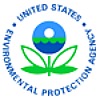 Yesterday, the Supreme Court of the United States announced it will not grant Certiorari in Ohio v. Sierra Club, et al. In this case, the Sixth Circuit found an area must adopt required pollution-control measures before the EPA can designate it as having satisfied the law’s health-based pollution standards.
Yesterday, the Supreme Court of the United States announced it will not grant Certiorari in Ohio v. Sierra Club, et al. In this case, the Sixth Circuit found an area must adopt required pollution-control measures before the EPA can designate it as having satisfied the law’s health-based pollution standards.
In 1997, the EPA created the National Ambient Air Quality Standards of fine particulate matter in the air. When the EPA created these standards, regions were designated as having met, or not met the air quality standards. In order to meet the standards, states were required to adopt “reasonable measures and technologies” to reduce the pollution in the problematic areas. In 2011, the EPA deemed Ohio to have met the appropriate standards because the air quality had improved. Ohio, however, had never created a pollution regulatory plan as the Clean Air Act required. In response, the Sierra Club filed suit alleging the EPA acted illegally by designated the areas as having met air quality standards.
Creating a pollution regulatory plan is crucial, according to Sanjay Narayan, the managing attorney for the Sierra Club on the case. Before 1990, the Clean Air Act had no requirement that states produce an implementation plan. According to Narayan, the expectation was “we [the EPA] don’t care how you get there, we aren’t going to tell you how to get there, we’re just going to check in at the deadline and expect you to have made it. And what happened was that the vast majority of the states did not meet the deadline.”
Narayan describes the implementation plan as “a show your math” requirement. This has been very useful in helping states create lasting change in their air quality–by creating a regulatory framework that shows how they can reduce air pollution, the states are more likely to meet their deadline. Narayan points out “It’s also useful for other areas to know what worked and what successful areas did. Here’s what turned out to be cost effective, that kind of record is tremendously useful as we move forward on what was meant to be a nation-wide campaign for healthy air for the public.”
In Ohio v. Sierra Club, there are a few details to consider. Pollution decreased, and that’s the goal. However, it might not be that simple. In the years preceding Ohio’s drop in air pollution, the economy crashed. Narayan draws comparisons to the Beijing Olympics, saying, “When people aren’t running their [industrial] plants for economic reasons, the air cleans up a little bit. But it turns around quickly once you turn the plants back on.” However, Ohio did meet the standard, and according to Narayan, to comply with the Clean Air Act they’d simply need to go back and show their work. He says, “They did meet the standard, and they say they have all the controls they need in place. There is a procedural step that Ohio hasn’t taken, and it shouldn’t be hard for Ohio to take it.”
The Sixth Circuit decision that currently stands requires Ohio to take those regulatory steps. In the current case, the Sixth Circuit agreed that the entire portion of the Clean Air Act must be followed, and that it wasn’t enough for Ohio to have simply met the standards. Ohio has appealed to the Supreme Court.
Narayan says, “It’s about the integrity of the clean air act.” These requirements are crucial in ensuring the air gets cleaned up in a timely manner. Narayan says, Decades of experience has shown us that without these requirements, states miss deadlines, air pollution lasts for much longer than it should and the public really suffers. The pollution sends kids to the hospital with asthma, it creates respiratory disease in the elderly-delay is a disaster for public health.”







 Some puddles, it says, are not jurisdictional. The language of the rule, however, suggests that puddles are arguably jurisdictional if they are in floodplains or riparian areas. The fact that puddles aren’t always wet may not be decisive: EPA considers streams which flow only when it rains or snow melts to be jurisdictional and identifies dry features as “water”:
Some puddles, it says, are not jurisdictional. The language of the rule, however, suggests that puddles are arguably jurisdictional if they are in floodplains or riparian areas. The fact that puddles aren’t always wet may not be decisive: EPA considers streams which flow only when it rains or snow melts to be jurisdictional and identifies dry features as “water”: